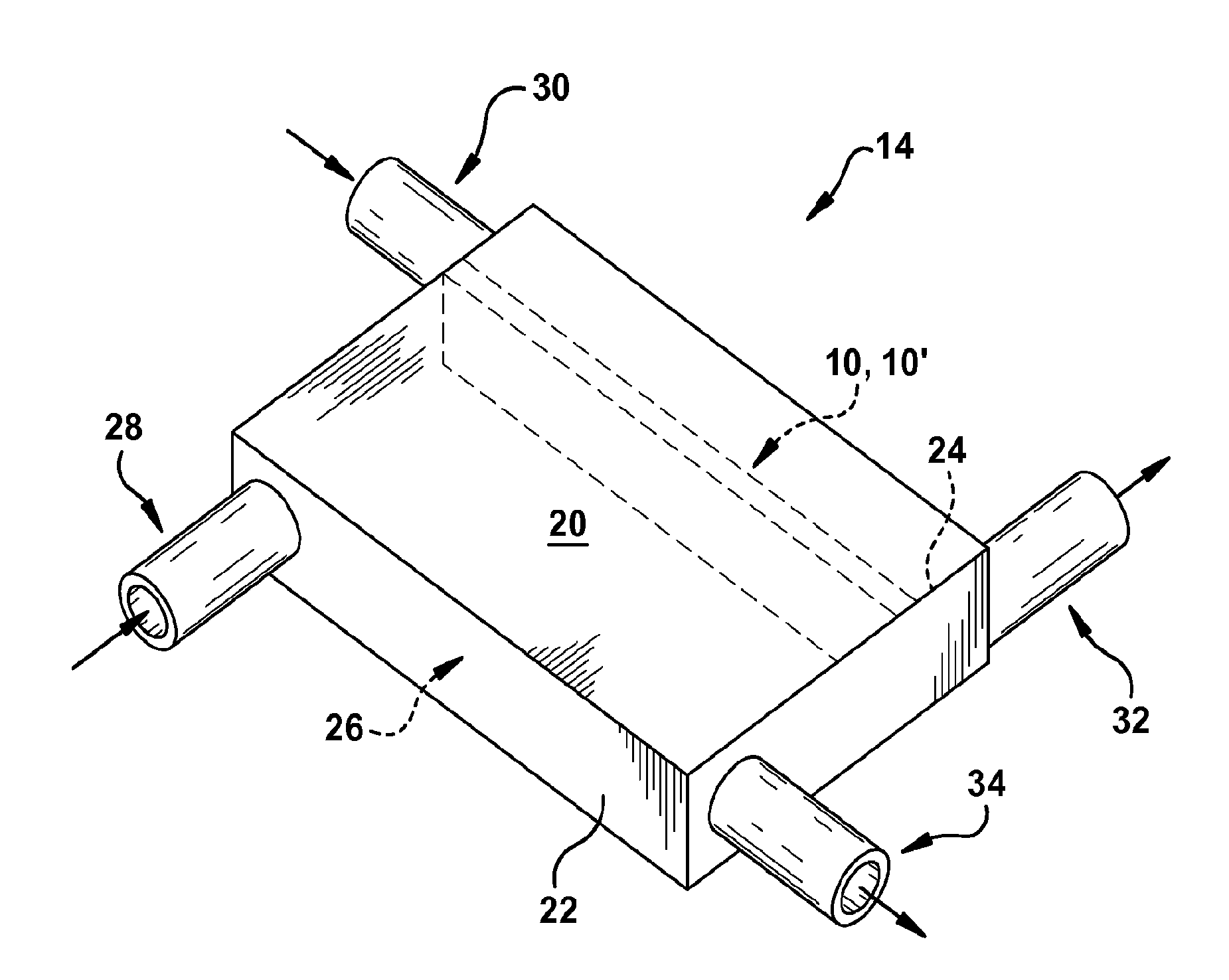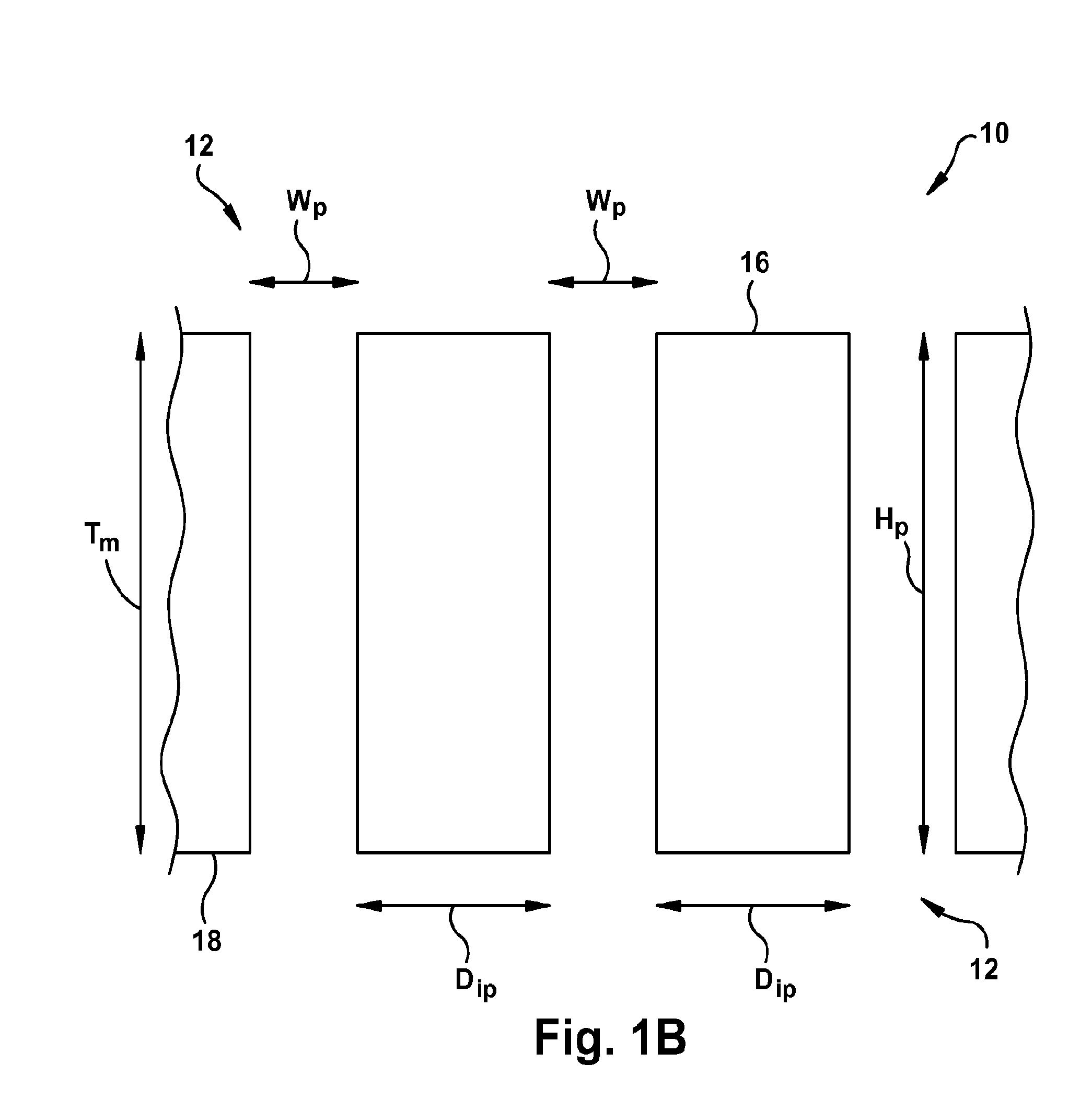Nanoporous membranes, devices, and methods for respiratory gas exchange
a membrane and gas exchange technology, applied in the field of membranes, devices, and methods for respiratory gas exchange, can solve the problems of affecting eating and physical therapy, affecting the effect of physical therapy, and further damage to the diseased lungs
- Summary
- Abstract
- Description
- Claims
- Application Information
AI Technical Summary
Benefits of technology
Problems solved by technology
Method used
Image
Examples
example 1
Silicon Microporous and Nanoporous Membranes are Manufactured With High Precision
[0062]Nanoporous membranes with monodisperse pores have been developed and prototyped using an innovative process based on MEMS (micro electro mechanical systems) technology. MEMS devices are unique in that they utilize not only the electrical properties of semiconductor materials, but also rely heavily on the mechanical performance and structuring of such materials. Such mechanical features are used to create movable structures to create sensors and micromanipulators, for example.
[0063]The manufacturing process of the present invention uses advanced nanolithography and thermal processing to establish the critical submicron pore size and density. FIGS. 4A-B show scanning electron microscopy (SEM) images of highly-uniform nanopores (FIG. 4A) and of a high-density array of filtration membranes (FIG. 4B). Pores sizes have been readily varied between 5-500 nm, and we have successfully controlled pore sizes ...
example 2
Establish Microfabrication Techniques to Create a Novel Membrane with Highly Uniform Tapered Pores to Facilitate Control of Pore Wetting
[0074]The leading cause of device failure in extracorporeal membrane oxygenation (ECMO), pore wetting, may be controlled by maintaining the liquid-gas phase transition at the blood side of the membrane. This can be achieved with sweep gas pressure rather than surface chemistry, but doing so risks gas embolus if a pressure transient disturbs the equilibrium position of the meniscus. An asymmetric tapered pore enhances pressure control of the phase interface, making it easier to maintain an equilibrium position with sweep gas pressure alone. To enhance control of pore shape and asymmetry, our existing microfabrication protocols are optimized.
[0075]In order to create tapered pores, refinements to our previously established microfabrication process are made. These refinements include adjusting etch parameters to obtain higher pore taper (asymmetry) and ...
example 3
Materials and Methods
Materials and Synthesis
[0099]3-Aminopropyltrimethoxysilane was purchased from United Chemical Technologies (Bristol, Pa., USA). Triethylamine, α-bromoisobutyryl bromide (BIBB, 98%), tetrahydrofuran (THF, H-PLC grade), bicyclohexyl, copper(I) bromide (CuBr, 99.999%), copper(II) bromide (CuBr2, 99.999%), 2,2′-bipyridyl (BPY, 99%), [2-(methacryloyloxy)ethyl]dimethyl-(3-sulfopropyl)ammonium hydroxide (SBMA, 97%), phosphate-buffered saline (PBS, 0.01 M phosphate buffer, 0.137 M sodium chloride, 0.0027 M potassium chloride, pH 7.4) were purchased from Sigma-Aldrich. Water used in the experiments was purified using a Millipore water purification system (Billerica, Mass., USA) with a resistivity of 18.2 MΩ·cm.
[0100]The ATRP initiator, 2-bromo-2-methyl-N-3-[(trimethoxysilyl)propyl]-propanamide (BrTMOS), was synthesized in our own laboratory according to the literature (Z. Zhang et al., Langmuir 22, 10072, 2006). Briefly, 3-aminopropyltrimethoxysilane (10 mmol) was mixed ...
PUM
| Property | Measurement | Unit |
|---|---|---|
| thickness | aaaaa | aaaaa |
| length | aaaaa | aaaaa |
| width | aaaaa | aaaaa |
Abstract
Description
Claims
Application Information
 Login to View More
Login to View More - R&D
- Intellectual Property
- Life Sciences
- Materials
- Tech Scout
- Unparalleled Data Quality
- Higher Quality Content
- 60% Fewer Hallucinations
Browse by: Latest US Patents, China's latest patents, Technical Efficacy Thesaurus, Application Domain, Technology Topic, Popular Technical Reports.
© 2025 PatSnap. All rights reserved.Legal|Privacy policy|Modern Slavery Act Transparency Statement|Sitemap|About US| Contact US: help@patsnap.com



